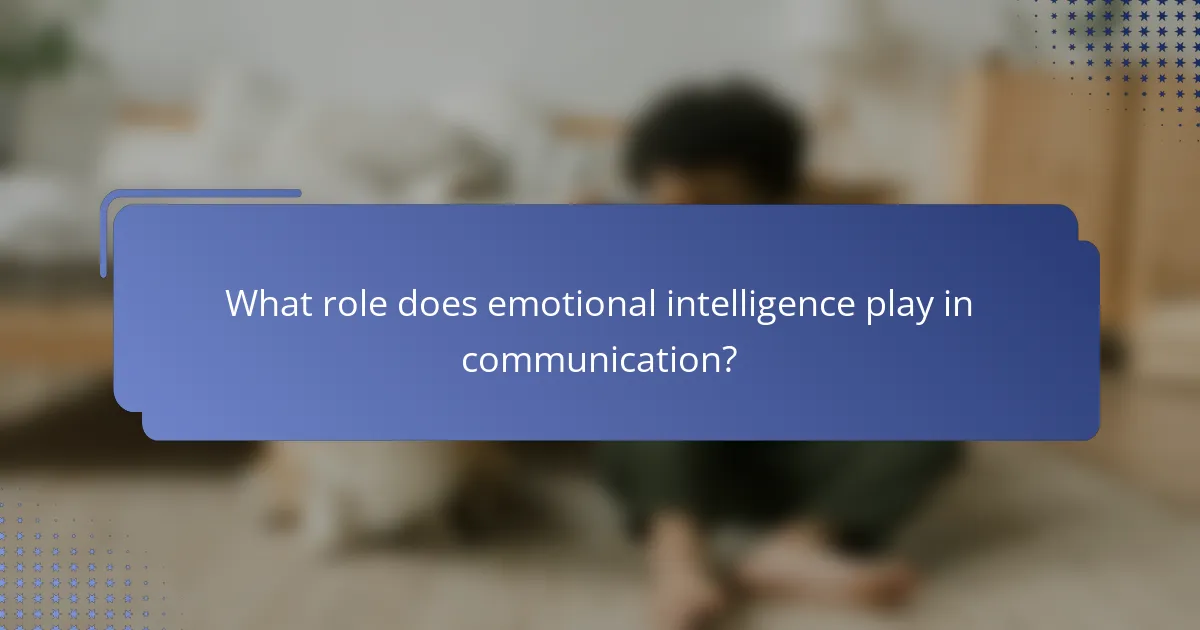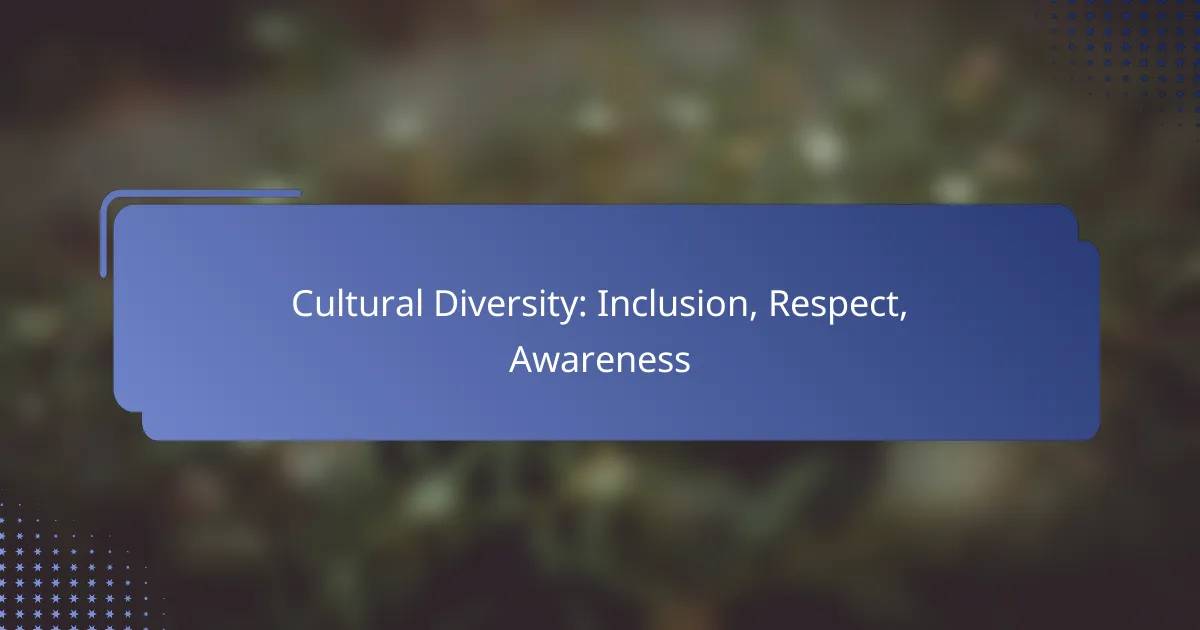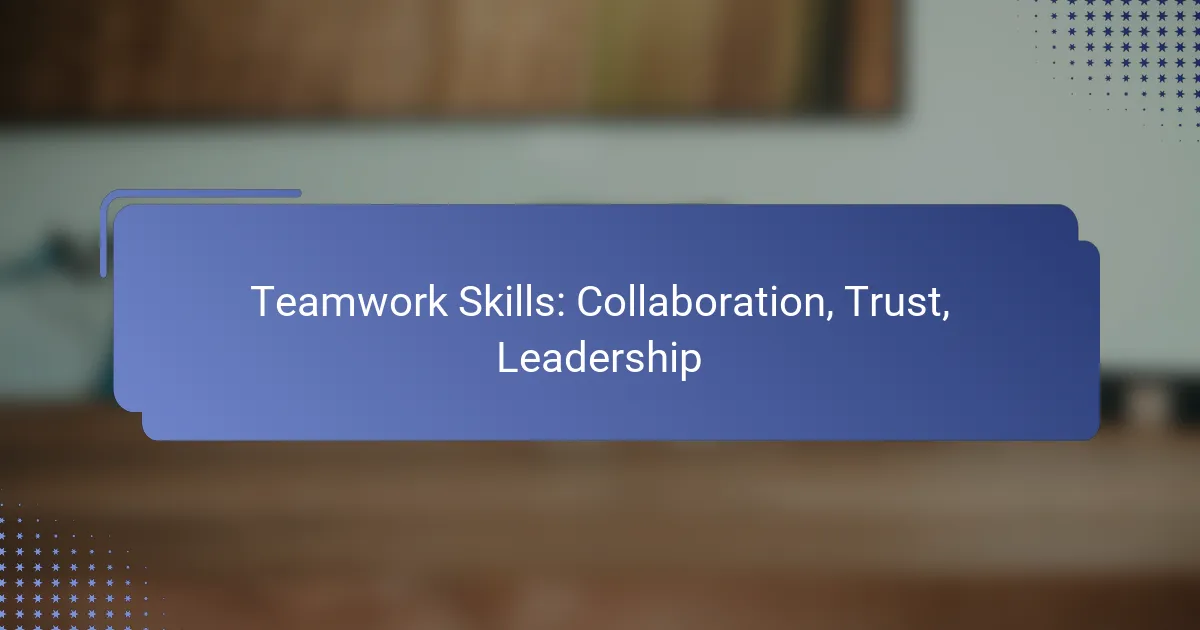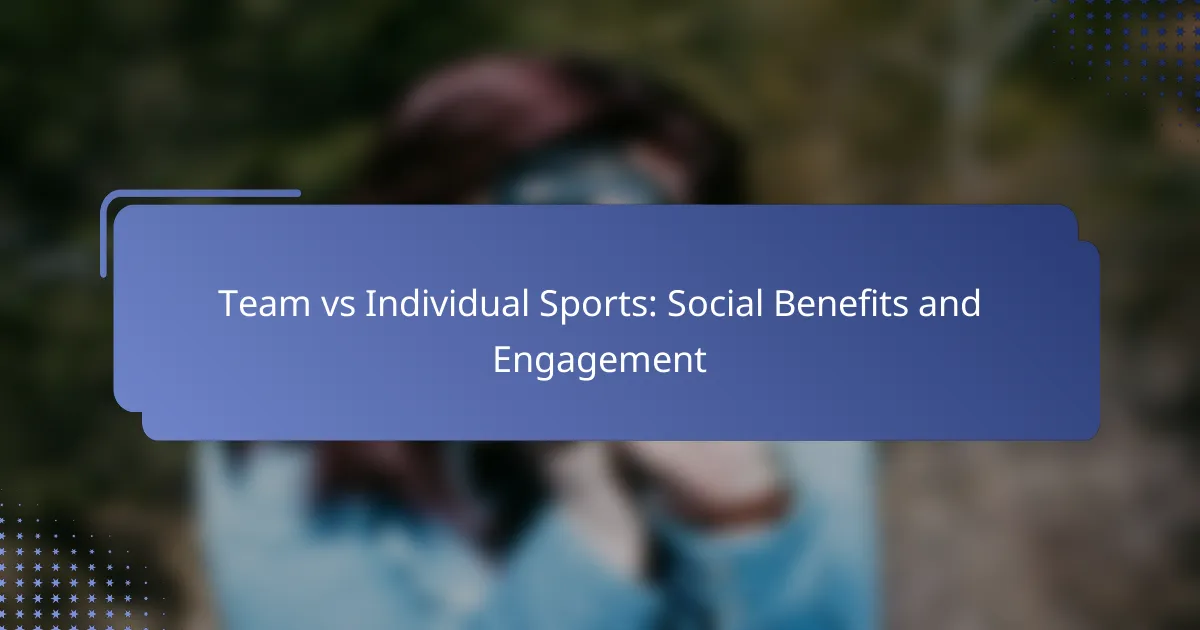Effective communication skills are essential for fostering understanding and cooperation in the workplace. By mastering expression, active listening, and constructive feedback, individuals can strengthen relationships and enhance team dynamics, leading to a more positive work environment.

How can effective communication skills improve relationships in the workplace?
Effective communication skills enhance workplace relationships by fostering understanding, cooperation, and a positive work environment. When employees express themselves clearly, listen actively, and provide constructive feedback, it leads to stronger connections and improved team dynamics.
Enhanced collaboration
Effective communication skills promote enhanced collaboration among team members. When individuals share ideas openly and listen to each other, it encourages a culture of teamwork and innovation. For instance, regular team meetings can facilitate the exchange of thoughts and ensure everyone is aligned on project goals.
To improve collaboration, consider implementing structured brainstorming sessions where all voices are heard. This can lead to a greater variety of solutions and a sense of ownership among team members.
Increased trust
Building trust in the workplace is greatly influenced by communication skills. When employees feel heard and understood, they are more likely to trust their colleagues and leaders. Transparency in communication, such as sharing both successes and challenges, can significantly enhance trust levels within a team.
To foster trust, practice active listening and provide honest feedback. This creates an environment where individuals feel safe to express their thoughts and concerns without fear of judgment.
Conflict resolution
Effective communication is crucial for resolving conflicts in the workplace. When disagreements arise, clear expression of thoughts and feelings can help clarify misunderstandings and lead to constructive discussions. Addressing issues promptly and respectfully can prevent escalation and promote a healthier work environment.
To manage conflicts, encourage open dialogue and focus on finding common ground. Techniques such as using “I” statements can help individuals express their feelings without placing blame, facilitating a more productive resolution process.

What are the key components of communication skills?
The key components of communication skills include expression, listening, and feedback. Mastering these elements enhances interpersonal interactions and promotes effective exchanges of information.
Expression
Expression involves conveying thoughts and feelings clearly and effectively. This can be done through verbal communication, body language, and tone of voice. For instance, using appropriate gestures and maintaining eye contact can significantly enhance the message being delivered.
To improve expression, focus on clarity and conciseness. Avoid jargon unless the audience is familiar with it, and practice articulating your points in a structured manner. A good rule of thumb is to keep sentences short and to the point, ideally under 20 words.
Listening
Listening is an active process that requires attention and engagement. It goes beyond simply hearing words; it involves understanding the speaker’s message and emotions. Effective listening can be demonstrated by nodding, summarizing key points, and asking clarifying questions.
To enhance listening skills, eliminate distractions and maintain an open mind. Techniques such as reflective listening, where you paraphrase what the speaker has said, can help ensure understanding and show that you value their input. Aim to spend at least 70% of a conversation listening rather than speaking.
Feedback
Feedback is essential for improving communication and fostering relationships. It involves providing constructive responses to others’ expressions and can be verbal or non-verbal. Effective feedback should be specific, timely, and focused on behaviors rather than personal attributes.
When giving feedback, use the “sandwich” approach: start with a positive comment, address areas for improvement, and conclude with another positive note. This method helps maintain a supportive atmosphere. Remember to ask for feedback on your own communication as well, as this can lead to personal growth and stronger connections.

How can one improve expression in communication?
Improving expression in communication involves developing clarity, confidence, and engagement in your delivery. Focusing on these aspects can significantly enhance how your message is received and understood by others.
Practice public speaking
Regular practice in public speaking can greatly enhance your expression skills. Joining local clubs, such as Toastmasters, provides a supportive environment to refine your speaking abilities and receive constructive feedback.
Consider setting specific goals for each speaking engagement, such as maintaining eye contact or varying your tone. Recording your speeches can also help identify areas for improvement, allowing you to track your progress over time.
Use clear language
Using clear language is essential for effective expression. Avoid jargon and overly complex terms that may confuse your audience; instead, opt for straightforward vocabulary that conveys your message succinctly.
When communicating, aim for brevity. A good rule of thumb is to keep sentences under 20 words and to use active voice. This approach not only clarifies your message but also keeps listeners engaged.
Engage in storytelling
Storytelling is a powerful tool for enhancing expression. By weaving narratives into your communication, you can make your points more relatable and memorable, helping your audience connect emotionally with your message.
To effectively use storytelling, structure your narrative with a clear beginning, middle, and end. Incorporate personal anecdotes or relevant examples that illustrate your key points, making your communication more impactful and engaging.

What techniques enhance listening skills?
Enhancing listening skills involves techniques that promote understanding and engagement in conversations. Key methods include active listening, paraphrasing, and recognizing non-verbal cues, which collectively improve communication effectiveness.
Active listening
Active listening is a technique where the listener fully concentrates, understands, and responds to the speaker. This involves not just hearing the words but also grasping the underlying emotions and intentions. To practice active listening, maintain eye contact, nod occasionally, and avoid interrupting the speaker.
One effective strategy is to summarize what the speaker has said before responding. This confirms your understanding and encourages the speaker to elaborate. For instance, saying, “So what you’re saying is…” can clarify points and foster a more productive dialogue.
Paraphrasing
Paraphrasing involves restating what the speaker has said in your own words. This technique not only shows that you are engaged but also helps clarify any misunderstandings. When paraphrasing, aim to capture the essence of the message without altering its meaning.
For example, if someone expresses frustration about a project, you might say, “It sounds like you’re feeling overwhelmed by the deadlines.” This approach validates their feelings and opens the door for further discussion, making it easier to address concerns collaboratively.
Non-verbal cues
Non-verbal cues are essential components of effective listening, as they convey emotions and reactions that words alone may not express. Pay attention to body language, facial expressions, and tone of voice, as these can provide context to the spoken message.
For instance, crossed arms might indicate defensiveness, while a relaxed posture suggests openness. Being aware of these signals can help you respond more appropriately and create a comfortable atmosphere for dialogue. Additionally, ensure your own non-verbal cues align with your verbal messages to enhance clarity and trust.

How to provide constructive feedback?
Constructive feedback is a method of offering insights that aim to improve performance or behavior. It should be clear, respectful, and focused on specific actions to foster growth and development.
Use the “sandwich” method
The “sandwich” method involves framing critical feedback between two positive comments. Start with a genuine compliment, then address the area for improvement, and conclude with another positive note. This approach helps to soften the impact of criticism and encourages receptiveness.
For example, you might say, “Your presentation was engaging and well-structured. However, some data points could be clearer. Overall, your enthusiasm really captured the audience’s attention.” This structure maintains a supportive tone while addressing necessary changes.
Be specific and actionable
Vague feedback can lead to confusion and frustration. Instead, focus on specific behaviors or outcomes that can be improved. Clearly articulate what was done well and what needs adjustment, providing actionable steps for improvement.
For instance, instead of saying, “You need to improve your writing,” you could say, “Consider using shorter sentences and clearer transitions to enhance readability.” This gives the recipient a clear direction to follow.
Focus on behavior, not personality
When providing feedback, concentrate on observable behaviors rather than personal traits. This helps to avoid defensiveness and keeps the discussion professional. By focusing on actions, you can provide constructive criticism without making it personal.
For example, instead of saying, “You are disorganized,” you could say, “I noticed that the project timelines were not met. Let’s discuss how we can improve planning for future projects.” This approach encourages a solution-oriented mindset and fosters a collaborative environment.

What role does emotional intelligence play in communication?
Emotional intelligence is crucial in communication as it enables individuals to understand and manage their own emotions while recognizing and influencing the emotions of others. This skill enhances clarity, fosters connection, and improves overall interaction quality.
Understanding emotions
Understanding emotions involves recognizing your feelings and those of others. This awareness allows for more effective communication, as it helps you tailor your message to the emotional state of your audience. For instance, if someone appears frustrated, acknowledging their feelings can lead to a more productive conversation.
To improve your emotional awareness, practice self-reflection and mindfulness. Regularly check in with your emotions and observe how they affect your communication style. This can help you respond more thoughtfully in conversations.
Empathy in interactions
Empathy is the ability to put yourself in someone else’s shoes and understand their perspective. In communication, this means actively listening and responding to the emotional cues of others. Demonstrating empathy can build trust and rapport, making discussions more open and honest.
To enhance your empathetic skills, practice active listening techniques, such as summarizing what the other person has said and asking clarifying questions. This not only shows that you care but also helps you grasp their feelings more accurately.
Managing interpersonal relationships
Managing interpersonal relationships effectively requires a blend of emotional intelligence skills, including understanding emotions and empathy. Strong relationships are built on clear communication, mutual respect, and the ability to navigate conflicts constructively.
To maintain healthy relationships, establish open lines of communication and regularly check in with others about their feelings. Avoid assumptions and instead encourage honest dialogue. This proactive approach can prevent misunderstandings and strengthen connections over time.



